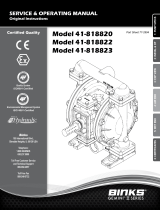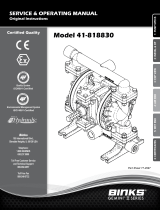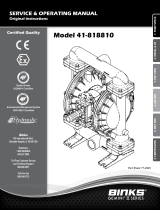
Instruction Manual
Page 7 of
20
Issue: 3.2
Important Information - Section 2.2
Directions for Working Safety
This Product has been constructed according to advanced technological
standards and is operationally reliable. Damage may, however, result if it is
used incorrectly by untrained persons or used for purposes other than those for
which it was constructed.
The locally current regulations for safety and prevention of accidents are valid
for the operation of this product under all circumstances.
International, national and company safety regulations are to be observed for
the installation and operation of this product, as well as the procedures involved
in maintenance, repairs and cleaning.
These instructions are intended to be read, understood and observed in all
points by those responsible for this product. These operating and maintenance
instructions are intended to ensure trouble free operation. Therefore, it is
recommended to read these instructions carefully before start-up. Binks cannot
be held responsible for damage or malfunctions resulting from the non-
observance of the operating instructions. These instructions including
regulations and technical drawings may not be copied, distributed, used for
commercial purposes or given to others either in full or in part without the
consent of Binks.
We reserve the right to alter drawings and specifications necessary for the
technical improvement of this product without notice.
High Pressure/Electrostatic Warning
High pressure equipment can be dangerous if used incorrectly, serious bodily
injury may occur if the following instructions are ignored. Installation and
maintenance should only be carried out by suitably qualified personnel.
1. Before attempting any work on a high-pressure system ensure material
pump, hydraulics, compressed air motor are isolated where relevant.
2. Relieve all pressure from the system. Note: It is possible for pressure to get
locked into a system, therefore ensure all sections of the system are
checked thoroughly for remaining pressure.
3. Take care when releasing fittings
4. Always replace worn hoses immediately
5. Never plug a leak with your finger, adhesive tape or other stop gap devices
6. Always ensure equipment is suitably earthed before running, to avoid any
chance of electrostatic build up.



























